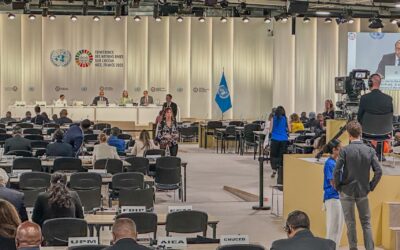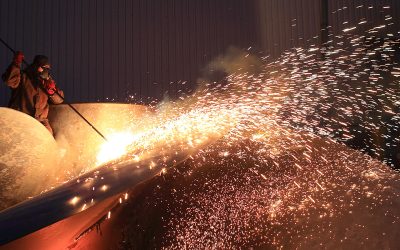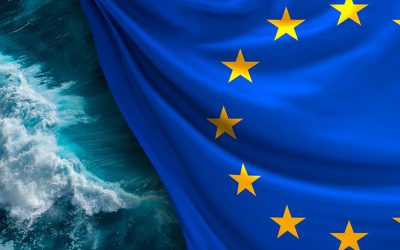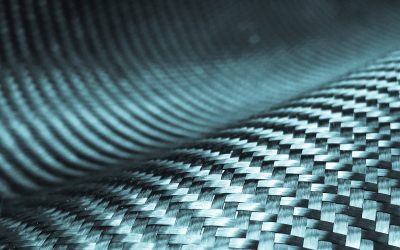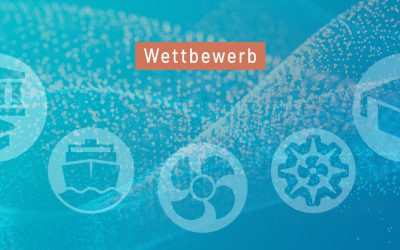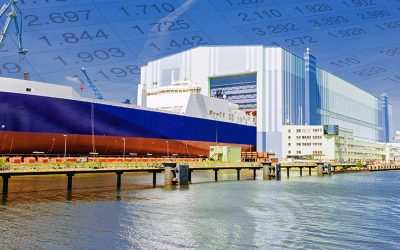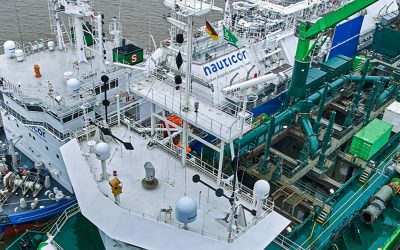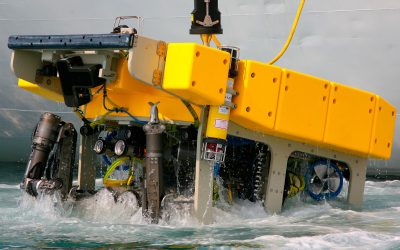
Capt. Runa Jörgens
Head of Issues and Projects
Phone: +49 40 9999 698 - 71
E-Mail: Joergens[at]dmz-maritim.de
The Paris Climate Agreement of 2015 stipulates that global warming should be kept below two degrees Celsius. To achieve this, man-made greenhouse gas emissions would need to be reduced to zero by 2050 according to available forecasts. The road to this is marked by intermediate goals.¹ Shipping is not covered by the Paris Climate Agreement and the International Maritime Organisation’s (IMO) CO2 reduction regulations contradict it considerably. The IMO’s greenhouse gas reduction plan anticipates that global shipping would reduce its emissions by 50% by 2050, based on 2008 levels.² However, there are increasing demands, also from various industry initiatives, to aim for CO2 neutrality by 2050 in shipping as well.³ This means a paradigm shift for shipping, shipbuilding and suppliers: they need to find the “energy sources of the future”. These would be fuels that are CO2 neutral from production to propulsion.
In addition to fossil LNG (liquid natural gas), which in principle can also be produced synthetically and biologically, the fuels under discussion include e-diesel, methanol, ammonia and hydrogen (H₂) in various states of matter as well as LPG (liquid petrol gas). Batteries (accumulators) are also noted as options for on-board energy storage; they are already in use today as hybrids.
From a technological point of view, the aforementioned alternatives can be manufactured in a CO2-neutral manner and brought on board. So far, there are only bunkering facilities for LNG and LPG along global trade routes. For methanol, ammonia, hydrogen or electricity, there are still no options on the required scale. However, for deployment and bunkering/supply to actually occur, regulatory gaps urgently need to be closed.
For companies (owners) ordering new ships today, it is important to know exactly which energy sources will be used to power their new builds tomorrow. The German Maritime Centre has therefore commissioned a study (Fuel Portfolio) that will, among other things, provide an overview of the different alternative fuels and their availability along international shipping routes. The study will present an overview of the current status and will make recommendations for action. It is expected to be available in the first half of this year.⁴
A brief look back: LNG – it’s all about minimising pollutants
Over the past two decades, LNG has been transformed from an exotic fuel into one of the potential shipping fuels of the future.
LNG was originally conceived as a substitute for diesel and heavy fuel oil to mitigate the significant pollutant emissions of sulphur, nitrogen oxides and particulate matter. These pollutant emissions are subject to tightening restrictions – for example, the IMO MARPOL Annex VI rules mean that normal heavy fuel oil can effectively no longer be used on the high seas, effective of the beginning of 2019.
LNG has been used on ships in European and other coastal waters for years without any major problems. Large container ships also run on this fuel in regular operations over long routes. Bunkering is increasingly possible along the main trade routes, and new LNG bunkering ships are in operation or under construction.
LNG technology is mature. However, to permit the use of LNG as a main fuel for worldwide shipping without compromising safety, the IMO and classification organisation need to develop regulations. The IMO-IGF Code is essential.⁵
The reduction of CO2 emissions, along with the avoidance of pollutants in exhaust gases, has always been an objective of the IMO’s international regulations. Here, the focus was and still is exclusively on efficiency-improving measures (EEDI & SEEMP, new and agreed-upon EEXI & CII).⁶ Efficiency-improving measures alone will not be sufficient to ensure the CO2-neutral shipping of the future.
Continuing to use fossil fuels in new ships?
In addition to the EEDI for new ships, the EEXI and CII regulations have been adopted for the in-service fleet. A large number of currently operating ships will not be able to comply with the ever-tighter regulations. This is one of the reasons for the sharp increase in the number of orders for new ships placed with shipyards worldwide. The above-mentioned fuel portfolio study examines what kind of fuels are planned or ordered for the new ships currently being built.
The results shown in the chart indicate that a large part of the new fleet (tankers, bulkers, containers, which collectively make up 80% of new ships) will continue to rely on classic fuels, often in combination with exhaust gas cleaning, in order to comply with the exhaust gas regulations currently in force. According to the current IMO strategy, these ships will continue to reduce CO2 emissions through better efficiency, including through lower propulsion power, that is, slower speeds. Excluding LNG tankers, the fossil “bridge fuel” LNG is hardly represented. This result cannot be described as anything other than sobering.
Considering the average ship lifespan of 25 years and more, as well as the expected tightening of global regulations on greenhouse gas reduction, these decisions favouring classic fossil fuels are questionable.
Obviously, the buyers are counting on a future supply of low-CO2-emission synthetic fuels to propel ships – provided that sufficient e- or bio-diesel as well as synthetically produced LNG/methane are then available. Statements from shipping companies point in this direction.⁷
At present there is no internationally valid comprehensive assessment of CO2 emissions for the above-mentioned fuels, from regenerative fuel production up to efficient use on ships (“well-to-propeller”). CO2 emissions have so far only been recorded from the bunker tank to the exhaust gas (“tank-to-propeller”). This is not sufficient to assess real CO2 emissions.
The assessment/CO2 quantification of LNG (or in future SNG/synthetic natural gas) will in particular have to include the phenomenon of methane slip in the entire fuel chain. Although the use of LNG reduces CO2 emissions by approximately 25% compared to heavy fuel oil, the emission reductions are almost entirely counteracted by methane slip, which is caused by the emission of unburned fuel gas components in the exhaust gas and in the logistics chain (from natural gas production to the tank on board).
The extent to which alternative and regeneratively produced fuels such as ammonia and methanol⁸ can contribute to the substitution of heavy fuel oil and LNG is examined in the aforementioned fuel portfolio study. Two aspects here include the possibilities to convert ships currently under construction and the associated costs. These also need to be investigated with regard to hydrogen (in any aggregate condition state of matter) and for pure electric propulsion. For long-distance shipping by large ocean vessels, there is currently a lack of options, in terms of both available electricity storage with appropriate capacity and charging infrastructure.⁹
The study is concerned with evaluating the availability of all alternatives along global trade routes and the costs associated with them.
It is not only necessary to clarify whether the new fuels are available and whether the ships can be converted accordingly but also how the fuels get on board. The bunkering of these fuels is a technological and regulatory challenge. For the German ports, the German Maritime Centre has developed a proposal based on a study on the bunkering of alternative fuels, concerning how information on individual regulations and permits can be made available and how uniform cross-port solutions can be found.
On course for the future?
The industry is at the beginning of the path to CO2-neutral shipping. For the most part, this reorientation will have to take place globally along the main shipping trade routes. The changeover to CO2-neutral/low-CO2 sources will have to be actively pursued, and not only by the players in shipping.
The transformation to a climate-neutral economy is a task for the entire industrialised world.

